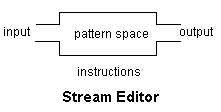Table Partitioning in SAP
When tables grow large, queries on the table will be slow. Index range scans, table scans, backups and restores will be slow. The most common characteristic of such tables is that the older entries in the table are seldom changed and updates happen on the newer entries. By partitioning the table, the older entries can be maintained in a seperate partion, thereby increasing performance--looking up for query results in a smaller set of data, parallel processing in different partitions, faster backups etc. Types of Partitions: Range Partition : This allows you to partition data by range of values. Example: 1st partition by column Date: Jan 01 2000 - Dec 31 2005; 2nd partition by column Date: Jan 01 2006 - Dec 31 2010 and 3rd partition by column Date: Jan 01 2011 - Dec 31 2015. List Partition : This allows you to maintain a list of values that constitute a partition. Ex: 1st partition by Plant: 5000; 2nd partition by Plant:6000. Hash Partition : A hash ...
